| Photo of the month – July 2025 |
[German version] |
Photo of the Month – July
Tie-down lashings to secure a small excavator – possible in theory, but completely pointless!
You can’t help asking yourself: What does an inspector think to himself when he is confronted with load security arrangements as questionable as these? What thoughts shoot through his head? We'll probably never find out.
So what happened?
A mini-excavator with an unladen weight of approximately 3.5 tonnes was being transported on a two-axle trailer – without any anti-slip mats. The loading surface was made of bare steel and was neither clean nor free of loose material.
According to § 22 of the German Road Traffic Regulations, loose materials are a problem in themselves – in this case, however, they were little more than the support act.
The attempt at load securing consisted of precisely one lashing belt, attached in the form of a “tie-down lashing”.
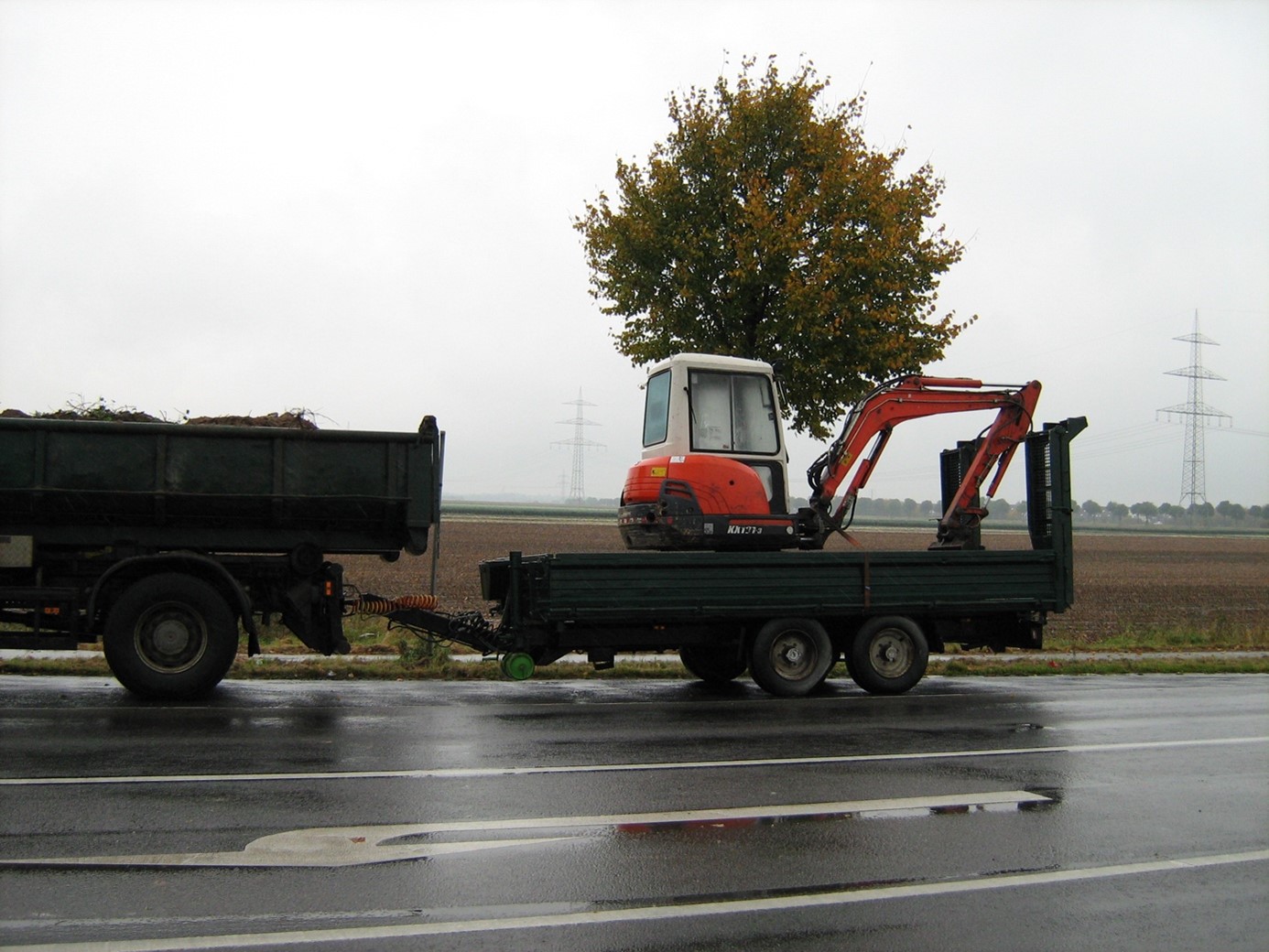
Figure 1 – [KLSK: Hans Steinbusch]
Identified shortcomings – analysis of the securing measures
The photo below clearly shows that there were a number of unsecured, loose objects such as wedges, rods and other items. Such items are a danger because they can move or fall off during the journey.
What is more, the loading surface was extremely dirty and visibly damp. Combined with the excavator's chains, this made for an extremely unfortunate material pairing. This specific combination – chain on a dirty, wet steel floor – is not governed by or assessed in any known standard or guideline (e.g. DIN EN 12195-1 or VDI 2700).
Experience shows that under such conditions, we can only assume a very low coefficient of friction. We estimate a maximum of µ = 0.15, which is not enough to secure the load by means of friction. Given these circumstances, the load was not reliably secured.
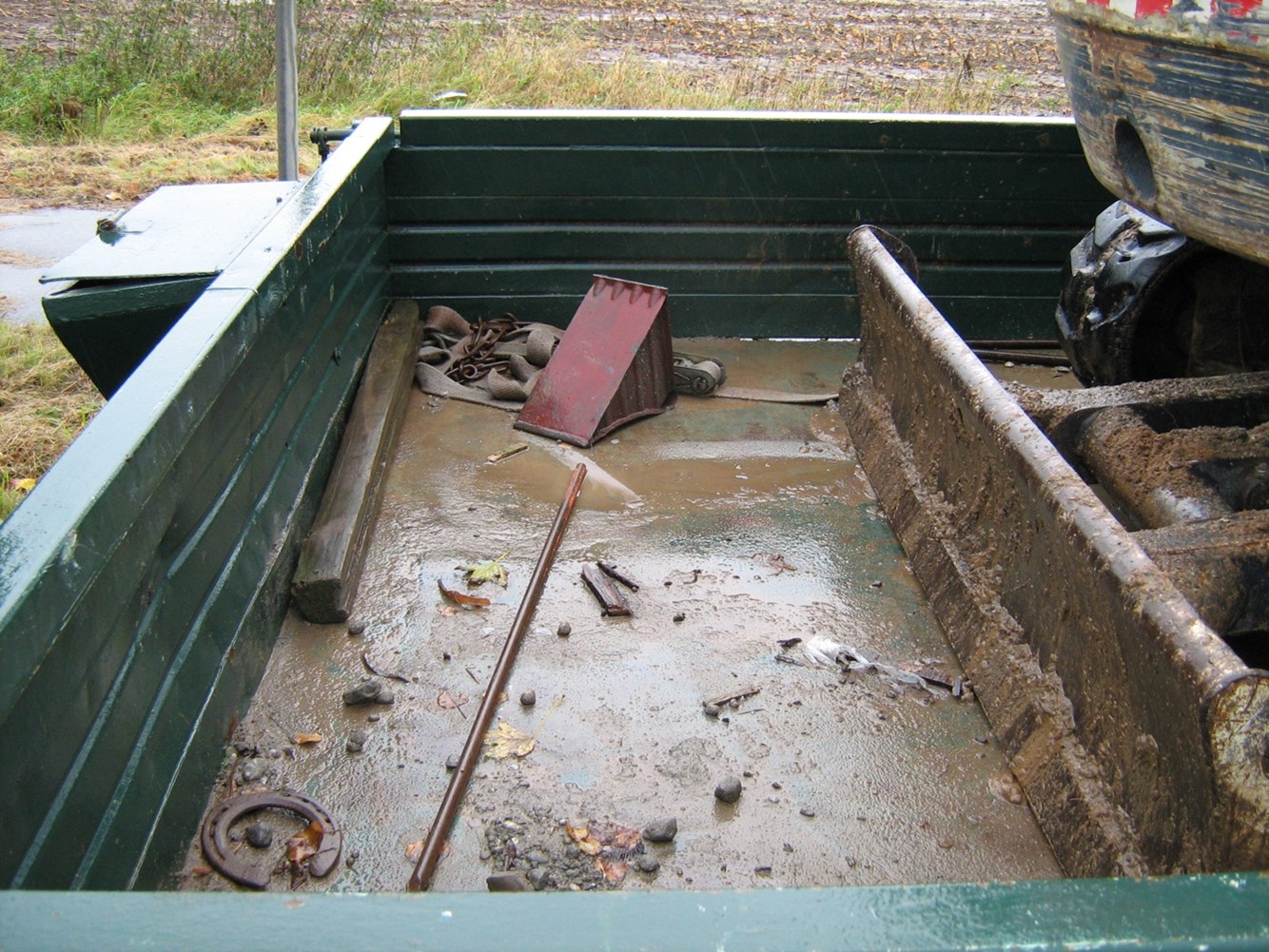
Figure 2 – [KLSK: Hans Steinbusch]
A single lashing belt was used to secure the load. However, this was no longer reliable because there was no longer any label attached to the fixed end (the part with the ratchet). According to DIN EN 12195-2 and VDI 2700 Part 3.1., this means that the belt must be considered ready for scrapping and may no longer be used.
But quite irrespective of the condition of the belt, the measures taken would not have been suitable for correctly securing the load present on the vehicle. Assuming a still intact lashing belt with a pre-tensioning force (STF) of 350 daN and a well-chosen angle of 45° (which was not the case here), calculations show that at least 38 such belts would have been needed to secure the load in question.
This example shows very clearly that tie-down lashings are neither practicable nor sufficiently secure for heavy machinery such as small excavators.
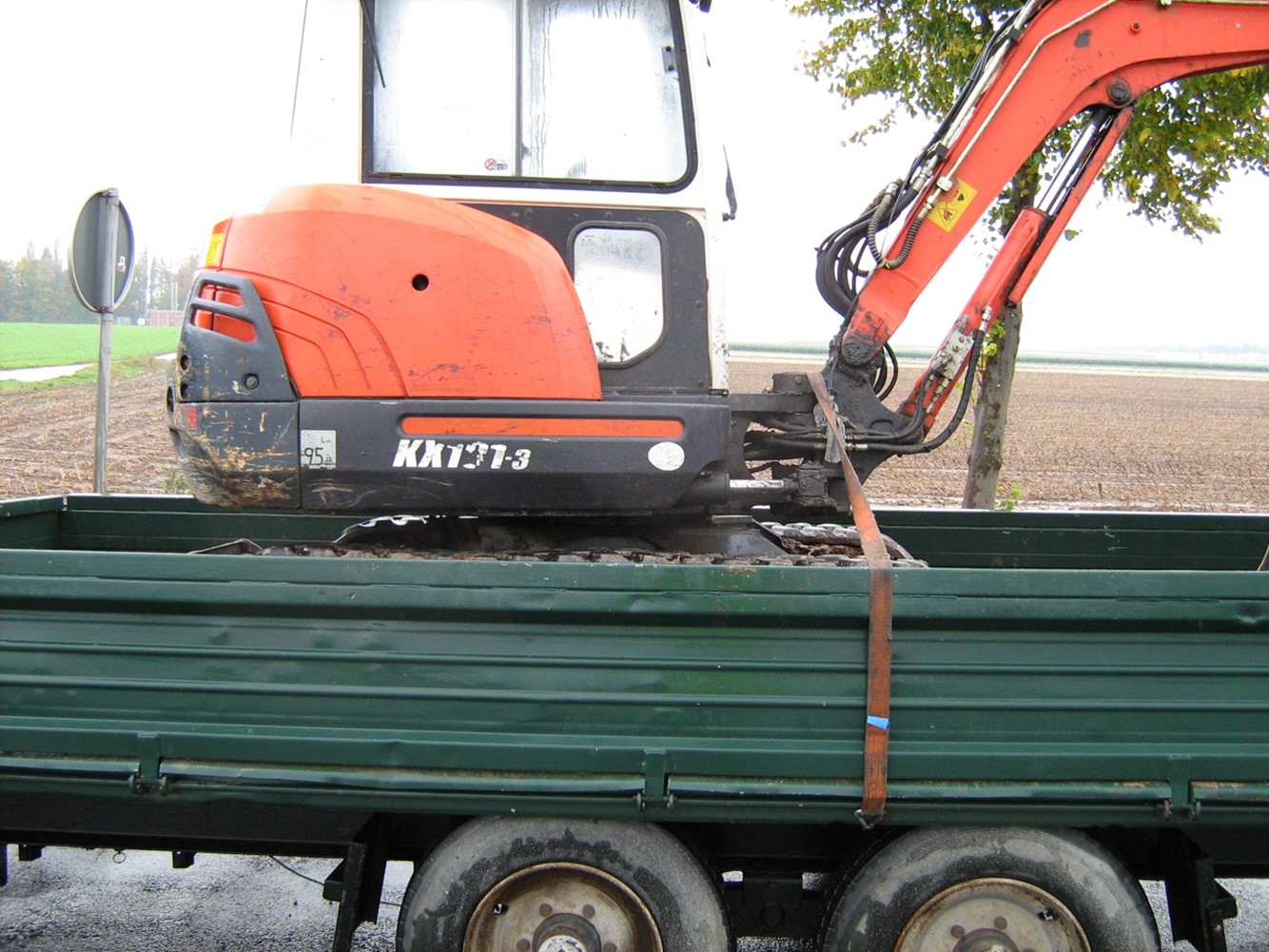
Figure 3 – [KLSK: Hans Steinbusch]
Another particularly critical point was the fact that the employed lashing belt was not attached to an available lashing point but was simply hooked in place under the side gate. Even if using the side gate for securing purposes in this way is not expressly prohibited, it has to be considered highly problematic at the technical level. Experience shows that the side gate can buckle or be pulled inwards when the belt is tensioned, with the result that the pre-tensioning force is greatly reduced and the load is no longer reliably secured.
The non-existent or completely unsatisfactory way this small excavator was secured represents a massive danger for the driver of the vehicle as well as for any other innocent road users. If the driver had had to brake in an emergency or take a bend, the excavator would very probably have left the loading surface – with potentially life-threatening consequences.
Fortunately, no damage was caused. However, the inspectors would not allow the driver to continue on his journey until the load had been secured correctly.
The driver faces a fine and penalty points from the licensing authority in Flensburg.
The fact that the necessary load-securing equipment was not present means that the owner is also responsible. He can also expect a fine and an entry in the records in Flensburg.
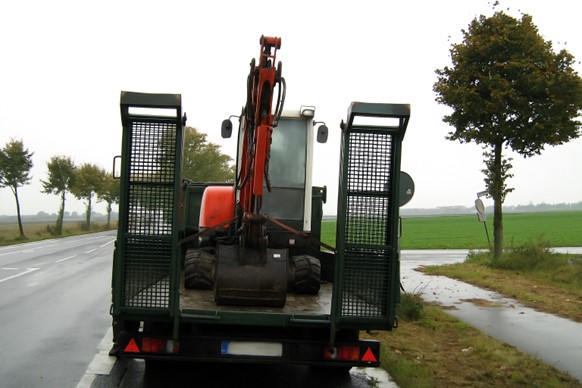
Figure 4 – [KLSK: Hans Steinbusch]
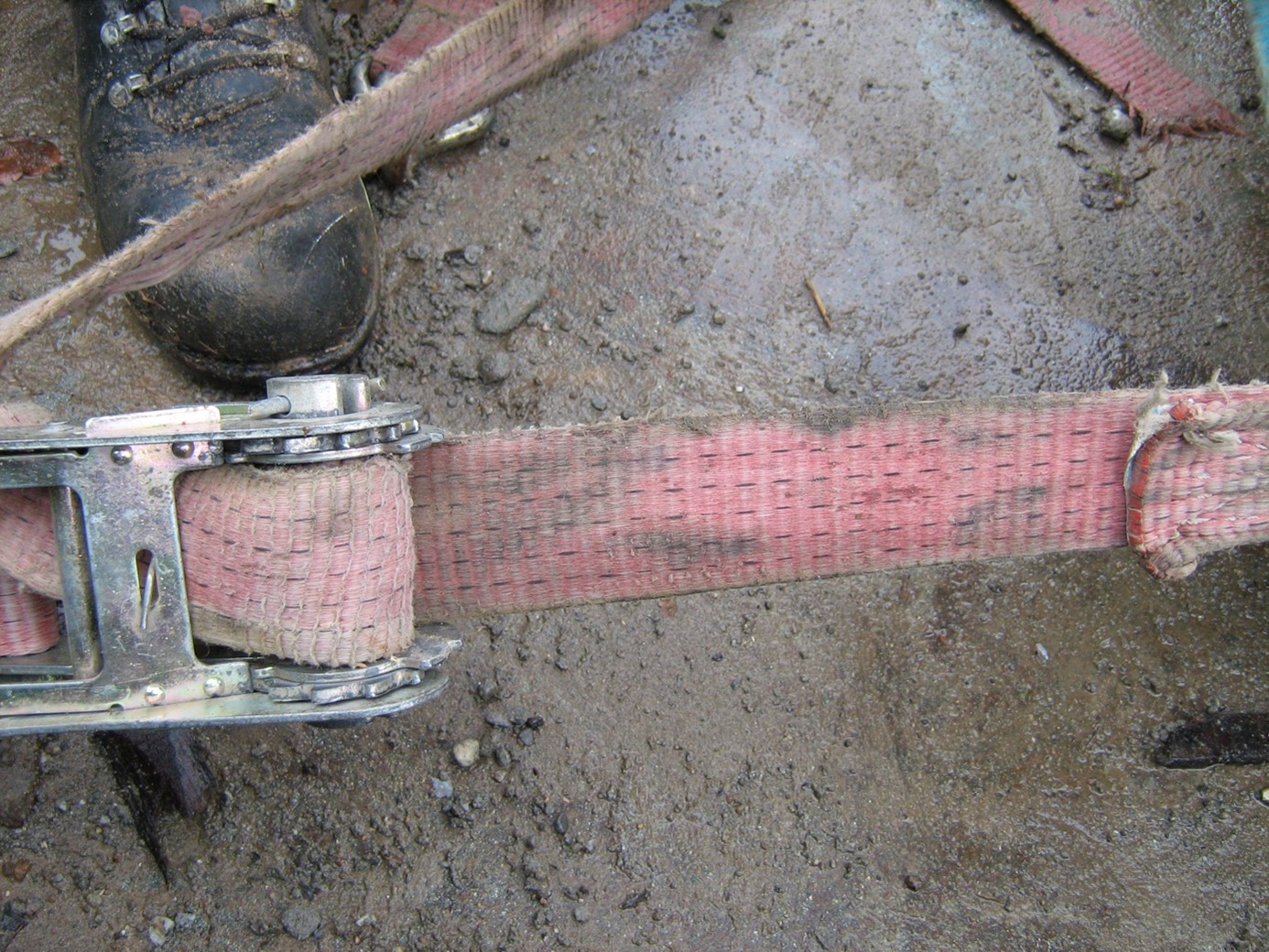
Figure 5 – [KLSK: Hans Steinbusch]
One way to secure the load: Diagonal lashings as a suitable securing measure
Diagonal lashings could be used as one effective way of securing the excavator. This type of load securing permits the reliable transmission of force in all directions, and is particularly suitable for heavy, compact cargo such as construction machinery.
Prerequisites for diagonal lashings:
Both the transporting vehicle and the excavator must be equipped with a sufficient number of lashing points. The loading surface must be clean (it must at least have been swept). The same applies to the caterpillar tracks or wheels of construction machinery.
To provide an acceptable basis for diagonal lashing, we assume a coefficient of friction of 0.25 µ, which is realistic, although not listed in DIN EN 12195-1.
To secure an excavator weighing approximately 3,500 kg, we need only four lashing belts, each with a lashing capacity (load securing force) of 2,000 daN, provided that the lashings are diagonal and correctly attached in all four corners.
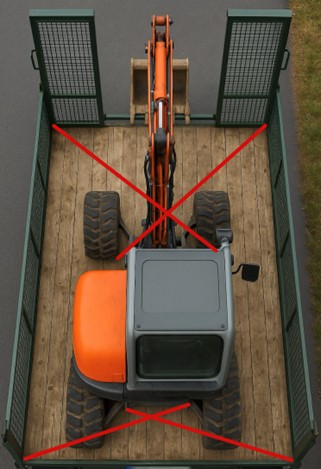
Diagram 1 -[KLSK: Top view created using AI]
Note on small items:
Small items and accessories should always be transported in a closed, locked, securely fastened box. This is the only way to guarantee that they cannot fall out and that they therefore pose no danger to traffic safety.
Conclusion:
Given a suitable transport vehicle, functioning lashing equipment and a little specialist knowledge, cargo can often be loaded securely with relatively little effort. What is important is that all the parties involved – from the planning through to the loading stage – know their responsibilities and comply with the relevant regulations. Because this is the only way to turn a possible risk into a safe transport operation.
Back to beginning
